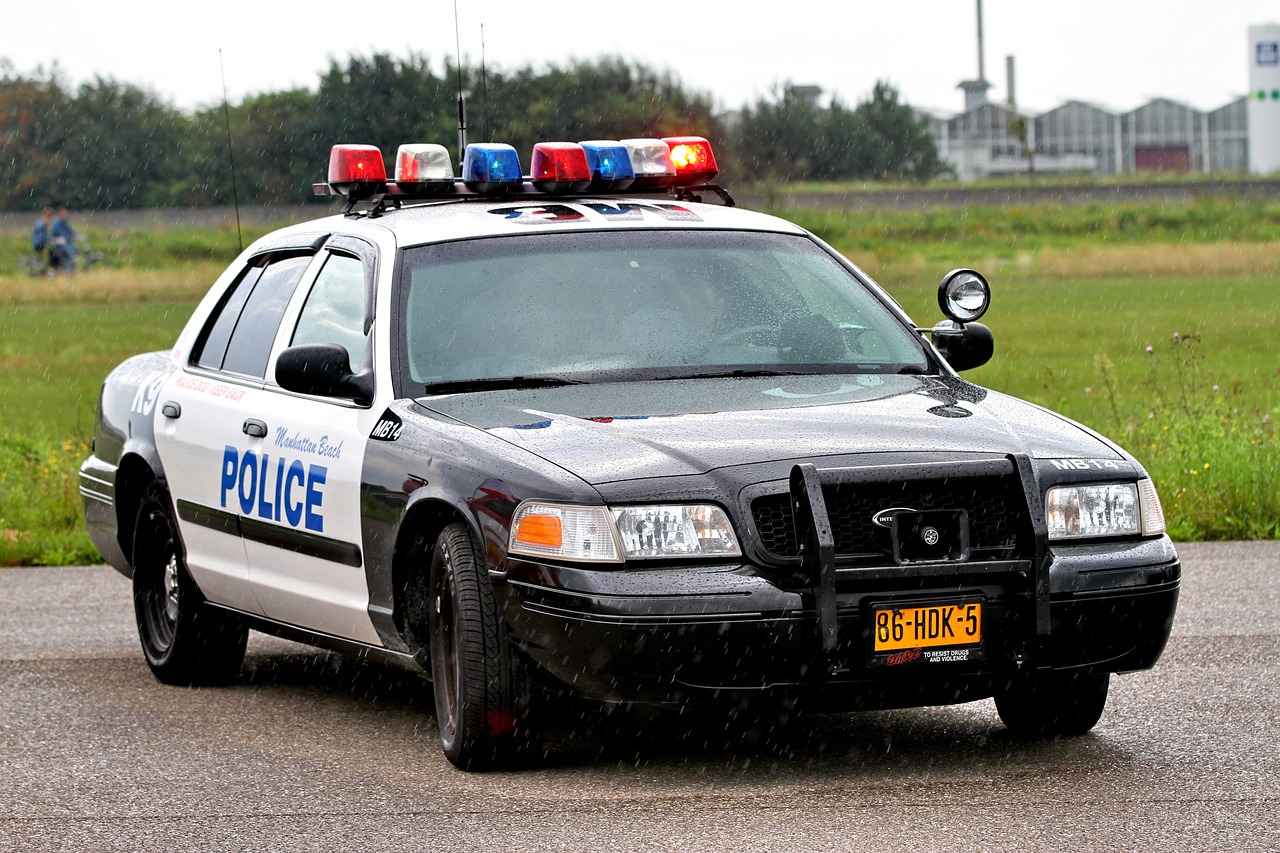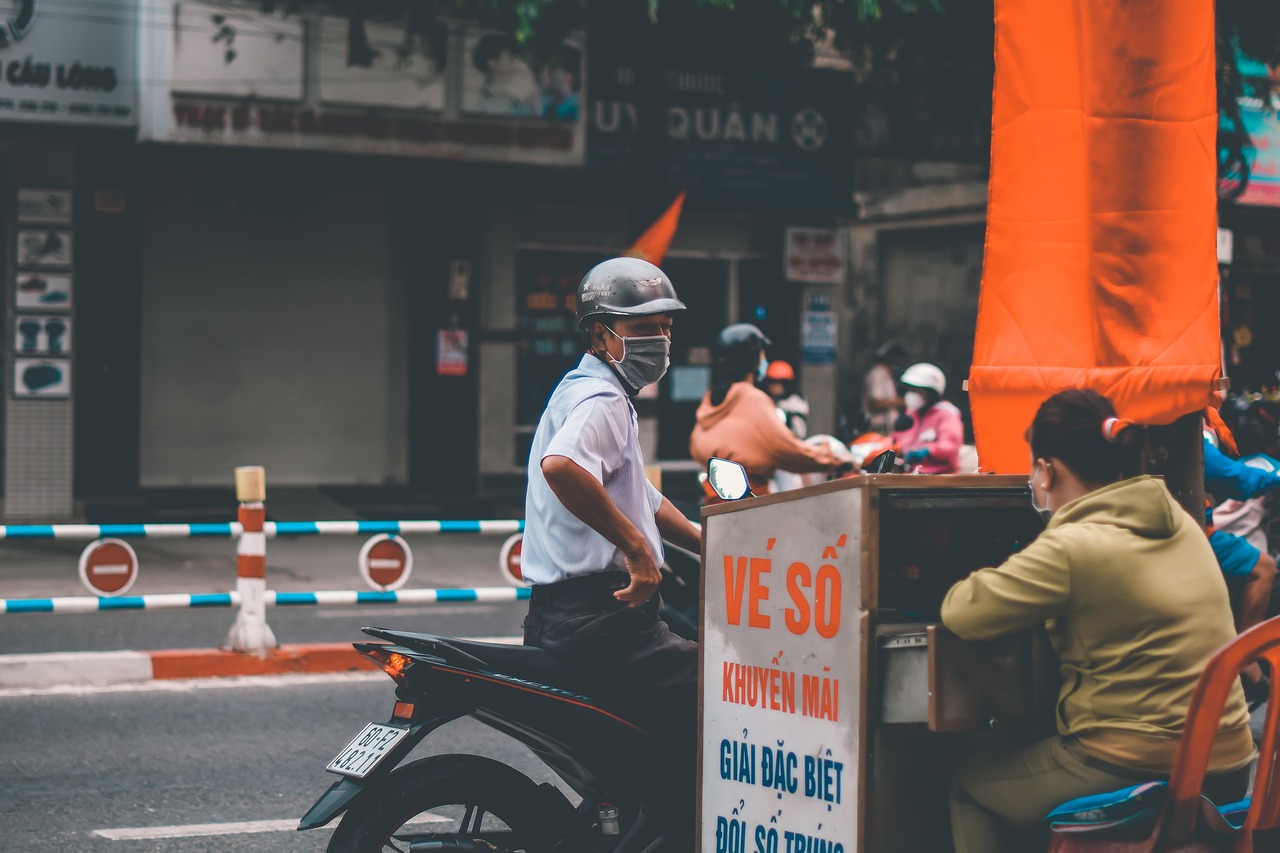This article delves into the crucial responsibilities and functions of the West Bengal Police, emphasizing their relentless efforts in maintaining law and order, engaging with the community, and implementing effective crime prevention strategies.
History of West Bengal Police
The West Bengal Police has a storied history that dates back to the colonial era. Over the years, it has undergone significant transformations to meet the evolving demands of society and law enforcement. From its inception, the force has adapted to the changing socio-political landscape, ensuring public safety while upholding the rule of law.
Organizational Structure
Understanding the organizational structure of the West Bengal Police is vital for grasping how various units and divisions collaborate to guarantee public safety. The police force is structured into several branches, each with specific responsibilities and functions.
- Police Ranks and Hierarchy: The hierarchy includes several ranks, each essential for maintaining law and order. Senior officers oversee strategic planning, while field officers manage daily operations.
- Specialized Units: The West Bengal Police comprises specialized units such as the Criminal Investigation Department (CID) and traffic police, focusing on distinct law enforcement areas.
Community Policing Initiatives
Community policing is a cornerstone strategy employed by the West Bengal Police to build trust and collaboration between law enforcement and the communities they serve. Various engagement programs are implemented to foster public awareness and encourage citizen participation in crime prevention.
Crime Prevention Strategies
The West Bengal Police employs proactive crime prevention strategies aimed at deterring criminal activities and enhancing public safety. Utilizing advanced surveillance technology and conducting public awareness campaigns are key components of these strategies.
Challenges Faced by West Bengal Police
Despite their commendable efforts, the West Bengal Police encounter several challenges, including resource limitations and public trust issues. Addressing these challenges is crucial for maintaining effective law enforcement.
Future Directions for West Bengal Police
Looking ahead, the West Bengal Police aims to enhance their capabilities through modernization and improved community relations. Investing in technology and training will be essential for adapting to future challenges in law enforcement.
Conclusion
In conclusion, the West Bengal Police play a vital role in ensuring safety and security in the state. They face numerous challenges while striving to adapt to the evolving landscape of law enforcement, demonstrating their commitment to public safety and community engagement.

History of West Bengal Police
The History of West Bengal Police is a fascinating journey that reflects the evolution of law enforcement in the region. Established during the colonial era, the West Bengal Police has undergone significant transformations to meet the dynamic needs of society and maintain law and order.
The origins of the West Bengal Police can be traced back to the early 19th century, specifically in 1861 when the British government enacted the Indian Police Act. This act aimed to establish a structured police force across India, including Bengal. Initially, the police force was primarily focused on maintaining colonial rule and suppressing dissent, often leading to a strained relationship with the local populace.
As India moved towards independence, the role of the police began to shift. The West Bengal Police started to emphasize protecting the rights of citizens and ensuring public safety. The partition of India in 1947 further complicated the policing landscape, as the state faced communal tensions and a surge in crime. The police force had to adapt quickly to these challenges, leading to the establishment of specialized units to handle specific issues such as riot control and criminal investigations.
In the subsequent decades, the West Bengal Police continued to evolve, embracing modernization and technology. The introduction of communication systems, forensic science, and data analytics has transformed traditional policing methods. Today, the West Bengal Police not only focuses on crime prevention but also engages in community policing initiatives, fostering trust and collaboration with citizens.
Despite facing numerous challenges, including resource constraints and public perception issues, the West Bengal Police remains committed to ensuring safety and security. Their rich history is a testament to their resilience and adaptability in the face of changing societal needs.
In conclusion, the West Bengal Police’s journey from a colonial force to a modern law enforcement agency is marked by significant milestones. Their ongoing efforts to enhance community relations and embrace new technologies will shape the future of policing in the state.

Organizational Structure
Understanding the organizational structure of the West Bengal Police is crucial for comprehending how different units and divisions work together to ensure public safety and security. The West Bengal Police operates under a well-defined hierarchy that facilitates effective law enforcement and community engagement. This structure is designed to address the diverse challenges faced by the police force while ensuring that public safety remains a top priority.
The organizational framework is divided into several key components:
- Administrative Divisions: The police force is segmented into various administrative divisions, each responsible for specific geographical areas. This decentralization allows for localized response strategies and community-focused policing.
- Specialized Units: Within the West Bengal Police, specialized units such as the Criminal Investigation Department (CID), Anti-Terrorism Squad (ATS), and traffic police handle specific types of crime and public safety issues. These units are equipped with specialized training and resources to tackle unique challenges.
- Support Services: Support services, including forensic teams and cybercrime units, provide essential assistance to frontline officers. Their expertise enhances the overall effectiveness of investigations and crime prevention efforts.
The hierarchy within the police force is structured as follows:
| Rank | Responsibilities |
|---|---|
| Director General | Oversees the entire police force and strategic planning. |
| Inspector General | Manages regional police operations and implements policies. |
| Superintendent of Police | Responsible for law enforcement in a district. |
| Station House Officer | Handles day-to-day operations at the police station level. |
This structured approach ensures that the West Bengal Police can effectively respond to incidents, manage resources, and maintain law and order. By understanding this organizational framework, citizens can better appreciate the complexities of police work and the commitment to ensuring safety and security in their communities.
Police Ranks and Hierarchy
The structure of the West Bengal Police is meticulously organized, ensuring that every rank contributes effectively to the overall mission of maintaining law and order. Understanding this hierarchy is crucial for grasping how various officers collaborate to serve the community.
| Rank | Responsibilities |
|---|---|
| Director General of Police (DGP) | Oversees the entire police force, formulates policies, and manages strategic operations. |
| Inspector General of Police (IG) | Handles specific regions or departments, ensuring effective law enforcement and administration. |
| Superintendent of Police (SP) | Manages district police operations, coordinates investigations, and supervises field officers. |
| Deputy Superintendent of Police (DSP) | Assists the SP in district management and oversees specific police divisions. |
| Inspector | Leads police stations, conducts investigations, and ensures law enforcement at the local level. |
| Sub-Inspector (SI) | Handles day-to-day operations at police stations and leads patrol units. |
| Assistant Sub-Inspector (ASI) | Assists SIs in investigations and manages constable teams. |
| Constable | The backbone of the police force, responsible for patrolling, responding to incidents, and community engagement. |
The hierarchy not only clarifies roles but also enhances coordination among various ranks. Each level is essential in executing police functions effectively, from strategic planning at the top to community interactions at the grassroots level. This structured approach allows the West Bengal Police to respond swiftly to public safety concerns and adapt to the dynamic nature of law enforcement.
In summary, the ranks within the West Bengal Police are designed to ensure a comprehensive and systematic approach to policing, fostering a safer environment for the community it serves.
Senior Officers
in the West Bengal Police, including the Director General and Inspector General, play a pivotal role in the strategic planning and overall management of police operations throughout the state. Their leadership is crucial for ensuring effective law enforcement and maintaining public safety.
These senior officers are tasked with formulating policies that guide the police force in addressing various challenges, including crime prevention, community engagement, and resource allocation. Their responsibilities extend to:
- Strategic Planning: Developing long-term goals and strategies to enhance police effectiveness and community relations.
- Operational Oversight: Monitoring daily police activities to ensure compliance with established protocols and standards.
- Resource Management: Allocating resources effectively to meet the needs of different police units and ensure optimal performance.
- Training and Development: Ensuring that officers receive proper training to handle various situations, from routine patrols to complex investigations.
- Community Relations: Engaging with community leaders and citizens to foster trust and cooperation between the police and the public.
The Director General serves as the highest-ranking officer and is responsible for the overall direction of the police force. This position requires a deep understanding of law enforcement, as well as the ability to navigate complex social issues. Meanwhile, the Inspector General assists in implementing policies and overseeing specific operational units, ensuring that the force operates efficiently and effectively.
In conclusion, the leadership provided by senior officers is essential for the West Bengal Police to adapt to the evolving landscape of crime and public safety challenges. Their strategic vision and management skills are vital in fostering a safe and secure environment for all citizens.
Field Officers
play a crucial role in the day-to-day operations of the police force, acting as the first line of defense in maintaining public safety and order. These officers, including Station House Officers (SHOs), are responsible for a wide range of activities that directly impact the community they serve.
One of the primary responsibilities of field officers is to manage police activities on a daily basis. This includes responding to emergency calls, investigating crimes, and patrolling neighborhoods to deter criminal activity. Their presence in the community helps to foster a sense of security among residents, as they are often the first point of contact for individuals seeking assistance or reporting incidents.
Field officers are also tasked with building relationships within the community. By engaging with local residents, they can better understand the unique challenges and concerns faced by different neighborhoods. This engagement is vital for effective policing, as it allows officers to tailor their approaches to meet the specific needs of the community.
Moreover, field officers often collaborate with other law enforcement units and community organizations to implement crime prevention strategies. These strategies may include organizing neighborhood watch programs, conducting safety workshops, and utilizing social media to disseminate information about local crime trends and safety tips.
In addition to their proactive measures, field officers must also be prepared to handle various challenges, such as resource constraints and public perception issues. Despite these challenges, their commitment to serving and protecting the community remains unwavering.
In summary, field officers, particularly Station House Officers, are integral to the West Bengal Police’s efforts in maintaining law and order. Their daily interactions with the public and proactive crime prevention initiatives significantly contribute to community safety and trust in law enforcement.
Specialized Units
The Role of Specialized Units in West Bengal Police
The West Bengal Police is a multifaceted law enforcement agency that plays a critical role in maintaining public safety and order. Among its various components, the specialized units are pivotal in addressing specific areas of law enforcement, ensuring that the police force operates efficiently and effectively in serving the community.
Criminal Investigation Department (CID)
The CID is one of the most crucial specialized units within the West Bengal Police. This unit is tasked with investigating serious crimes, including murder, fraud, and organized crime. The CID employs skilled detectives who utilize advanced investigative techniques to gather evidence and solve complex cases. They often collaborate with other law enforcement agencies and forensic experts to ensure thorough investigations.
Traffic Police
The traffic police unit is dedicated to managing road safety and traffic regulations. Their primary responsibilities include enforcing traffic laws, preventing accidents, and ensuring smooth vehicular movement. They conduct regular checks, manage traffic during peak hours, and run awareness campaigns to educate the public about road safety. This unit plays a significant role in reducing traffic-related incidents and promoting safe driving practices.
Other Specialized Units
- Anti-Narcotics Task Force: Focuses on combating drug trafficking and abuse.
- Cyber Crime Unit: Handles crimes related to technology and the internet.
- Special Operations Group: Engages in counter-terrorism and high-risk operations.
Conclusion
In summary, the specialized units of the West Bengal Police, including the CID and traffic police, are essential for addressing specific law enforcement challenges. Their focused approach allows for more effective crime prevention and community safety, highlighting the importance of these units in the overall structure of the police force.

Community Policing Initiatives
Community policing is an essential strategy utilized by the West Bengal Police to build strong relationships with the communities they serve. This approach emphasizes collaboration, trust, and proactive measures that engage citizens in the overall safety and security of their neighborhoods.
| Key Aspects of Community Policing | Description |
|---|---|
| Building Trust | By fostering open communication and transparency, the West Bengal Police aim to establish a strong foundation of trust with community members. |
| Collaborative Efforts | Community policing encourages partnerships between law enforcement and local organizations, making crime prevention a shared responsibility. |
| Proactive Engagement | Through regular community meetings and outreach programs, police officers actively engage with citizens to address their concerns and gather feedback. |
One of the primary goals of community policing is to empower citizens. The West Bengal Police organize various engagement programs that focus on educating the public about safety measures and crime prevention tactics. These programs not only inform residents but also encourage them to take an active role in safeguarding their communities.
- Neighborhood Watch Programs: These initiatives encourage residents to work together and report suspicious activities to the police.
- Safety Workshops: Workshops are conducted to educate citizens about personal safety, emergency response, and self-defense techniques.
- Community Events: Festivals and local gatherings provide opportunities for police officers to interact with residents in a friendly setting.
Moreover, the implementation of feedback mechanisms is vital in community policing. Citizens are encouraged to voice their concerns, suggestions, and experiences, creating a two-way communication channel. This feedback helps the police to improve their services and adapt to the ever-changing needs of the community.
In conclusion, community policing initiatives by the West Bengal Police are crucial in promoting a safe and secure environment. By building trust, encouraging collaboration, and engaging actively with citizens, the police not only enhance public safety but also foster a sense of community ownership and responsibility.
Engagement Programs
play a crucial role in fostering community safety and enhancing citizen participation in crime prevention efforts. The West Bengal Police has implemented a range of innovative programs designed to raise awareness about safety issues and encourage active involvement from the public.
These programs are aimed at creating a strong partnership between law enforcement and the community, ensuring that citizens are not just passive recipients of safety measures, but active participants in maintaining law and order. Below are some key aspects of these engagement initiatives:
- Safety Workshops: Regular workshops are held in various neighborhoods to educate citizens on personal safety, emergency response, and crime reporting procedures. These sessions empower individuals with the knowledge they need to protect themselves and their families.
- Community Patrols: The West Bengal Police encourages local residents to form community patrols. These groups work alongside police officers to monitor their neighborhoods, report suspicious activities, and build a sense of security among residents.
- School Programs: Engaging with schools, the police conduct programs aimed at educating children about safety, the importance of reporting crimes, and understanding the role of law enforcement. This early education fosters a culture of safety from a young age.
- Public Forums: Regular public forums are organized where citizens can voice their concerns, ask questions, and provide feedback on police practices. This open dialogue strengthens community trust and transparency.
Moreover, the police utilize social media platforms to disseminate information about safety tips, crime alerts, and upcoming events. By leveraging technology, they reach a broader audience and engage younger demographics effectively.
In conclusion, the engagement programs initiated by the West Bengal Police are essential in creating a safer environment. By promoting awareness and encouraging citizen involvement, these initiatives not only help in crime prevention but also strengthen the bond between the police and the community they serve.
Feedback Mechanisms
play a crucial role in enhancing the relationship between the West Bengal Police and the communities they serve. By establishing effective channels for communication, these mechanisms allow citizens to express their concerns, suggestions, and experiences regarding law enforcement activities. This two-way communication fosters transparency and accountability, which are essential for building trust between the police and the public.
One of the primary benefits of feedback mechanisms is that they empower citizens. When individuals feel that their voices are heard, they are more likely to engage with law enforcement positively. This engagement can take various forms, including community meetings, online surveys, and dedicated hotlines, all designed to gather input from the public. Such initiatives encourage citizens to actively participate in discussions about safety and security in their neighborhoods.
The implementation of these feedback systems also helps the police to identify specific issues within the community. By analyzing the feedback received, law enforcement agencies can pinpoint areas that require immediate attention, whether it be rising crime rates, inadequate police presence, or community safety concerns. This data-driven approach enables the police to allocate resources more effectively and tailor their strategies to meet the unique needs of each locality.
Moreover, feedback mechanisms can lead to improved police practices. When officers receive constructive criticism or suggestions from the community, they can adjust their methods to enhance public relations and service delivery. This continuous feedback loop not only helps in refining police operations but also contributes to a more responsive and responsible policing model.
In conclusion, the establishment of robust feedback mechanisms is vital for fostering a collaborative environment between the West Bengal Police and the public. By encouraging open dialogue, these systems enhance community trust, improve policing strategies, and ultimately contribute to a safer and more secure environment for all citizens.

Crime Prevention Strategies
The West Bengal Police has been at the forefront of ensuring public safety and security through various . These strategies are designed not only to deter criminal activities but also to foster a sense of safety within the communities they serve. This article delves into the proactive measures undertaken by the West Bengal Police to enhance public safety across the state.
- Community Engagement: One of the most effective strategies employed by the West Bengal Police is community engagement. By involving local residents in safety initiatives, the police can build trust and encourage collaboration. Programs such as neighborhood watch schemes and community meetings help citizens feel empowered to report suspicious activities.
- Intelligence Gathering: The West Bengal Police actively collect and analyze data related to crime patterns. This intelligence helps in identifying potential hotspots and deploying resources effectively. By understanding the trends, the police can anticipate and prevent criminal activities before they occur.
- Public Awareness Campaigns: Education plays a crucial role in crime prevention. The police conduct regular awareness campaigns to inform citizens about safety practices, emerging crime trends, and reporting mechanisms. These initiatives aim to equip the public with knowledge, making them active participants in their own safety.
- Use of Technology: Advanced technologies, including surveillance cameras and mobile applications, are utilized to monitor areas with high crime rates. The integration of technology not only aids in real-time monitoring but also enhances response times during emergencies.
- Collaboration with Other Agencies: The West Bengal Police collaborates with various governmental and non-governmental organizations to enhance crime prevention efforts. This collaboration ensures a comprehensive approach to tackling crime, addressing underlying social issues, and providing support services to affected individuals.
In conclusion, the West Bengal Police employs a multifaceted approach to crime prevention that combines community engagement, intelligence gathering, public awareness, technology, and collaboration. These strategies are essential in creating a safer environment for all citizens, ultimately contributing to the overall well-being of the state.
Surveillance and Technology
In today’s rapidly evolving landscape of law enforcement, the integration of advanced surveillance technology has become paramount for police forces, including the West Bengal Police. This technology plays a crucial role in enhancing public safety and improving the efficiency of crime response.
By employing sophisticated surveillance systems, law enforcement can effectively monitor high-crime areas. These systems include closed-circuit television (CCTV) cameras, drones, and other digital monitoring tools that provide real-time data. The ability to analyze this data allows police to identify crime patterns and deploy resources more strategically.
Furthermore, the use of technology enables a quicker response to incidents. For instance, when a crime is detected via surveillance feeds, officers can be dispatched immediately to the scene, significantly reducing the time it takes to address the situation. This rapid deployment is critical in preventing further criminal activity and ensuring community safety.
Additionally, the integration of data analytics with surveillance technology allows for predictive policing. By analyzing historical data, police can anticipate potential hotspots for criminal activity and increase patrols in those areas, thereby acting proactively rather than reactively. This shift not only enhances public safety but also fosters a sense of security within the community.
Moreover, community engagement is bolstered through the transparency provided by surveillance technology. When citizens are aware that their areas are being monitored, it can deter criminal behavior and encourage community members to report suspicious activities, creating a collaborative environment between the police and the public.
In conclusion, the utilization of advanced surveillance technology by the West Bengal Police is a significant step towards modernizing law enforcement. By improving response times and fostering community trust, these technologies are essential tools in the ongoing effort to maintain safety and security in society.
Public Awareness Campaigns
play a crucial role in enhancing community safety and empowering citizens. These initiatives are designed to inform the public about prevalent crime trends and essential safety measures, equipping individuals with the knowledge they need to protect themselves and their neighborhoods.
One of the primary objectives of public awareness campaigns is to foster a sense of responsibility among citizens. By educating them on how to recognize suspicious activities and report them, the campaigns encourage proactive involvement in crime prevention. For instance, workshops and seminars are often organized to discuss topics such as personal safety, home security, and community vigilance.
Additionally, these campaigns utilize various media platforms, including social media, television, and community events, to reach a broader audience. Engaging visuals and informative content help capture attention and drive home the importance of safety measures. For example, infographics that outline steps to take during emergencies or how to secure homes effectively can be particularly impactful.
- Crime Prevention Tips: Simple yet effective strategies like locking doors, being aware of surroundings, and using neighborhood watch programs.
- Emergency Contacts: Providing a list of local emergency numbers and resources available for victims of crime.
- Community Involvement: Encouraging citizens to participate in local safety meetings and volunteer for community patrols.
Moreover, feedback from community members is essential for the continuous improvement of these campaigns. Surveys and suggestion boxes allow citizens to express their concerns and share ideas, fostering a two-way communication channel that enhances trust between law enforcement and the community.
In conclusion, public awareness campaigns are vital in building safer communities. By educating citizens and encouraging active participation in crime prevention efforts, these initiatives not only empower individuals but also strengthen the community as a whole.

Challenges Faced by West Bengal Police
Despite the dedicated efforts of the West Bengal Police to maintain law and order, they encounter a myriad of challenges that hinder their effectiveness. Understanding these challenges is crucial for developing strategies to enhance policing and community safety.
- Resource Limitations: One of the most pressing issues is the limited resources available to the police force. Budget constraints often lead to inadequate manpower, outdated equipment, and insufficient training for officers. This limitation can significantly impact their operational efficiency and ability to respond swiftly to incidents.
- Public Trust Issues: Building and maintaining public trust is essential for effective law enforcement. However, incidents of corruption, misconduct, and perceived bias can erode community confidence in the police. The West Bengal Police must actively work to rebuild this trust through transparency and accountability.
- Evolving Nature of Crime: The landscape of crime is constantly changing, with new trends such as cybercrime and organized crime emerging. The West Bengal Police must adapt to these evolving threats by enhancing their investigative techniques and leveraging technology.
- Public Perception: The way the police are perceived by the community can significantly affect their operations. Negative media portrayals and public skepticism can lead to a lack of cooperation from citizens, making it challenging for the police to gather intelligence and solve cases.
- Political Interference: In some instances, political pressures can hinder police operations. Officers may find themselves navigating complex political landscapes that can affect decision-making and law enforcement priorities.
In conclusion, the challenges faced by the West Bengal Police are multifaceted and require a comprehensive approach to address effectively. By focusing on resource allocation, community engagement, and adapting to the changing crime landscape, the police can enhance their effectiveness and public trust.
Resource Limitations
In the realm of law enforcement, particularly for the West Bengal Police, limited resources pose a significant challenge that can adversely affect their operational effectiveness. This limitation manifests in various forms, including a shortage of personnel, inadequate funding, and insufficient technological support.
When police forces are under-resourced, their ability to respond to incidents promptly diminishes. For instance, fewer officers on patrol mean longer response times to emergencies, which can result in escalated situations and a perception of vulnerability among the community. Furthermore, a reduced presence in neighborhoods can lead to increased crime rates, as potential offenders may feel emboldened by the lack of police visibility.
Moreover, budget constraints often limit the West Bengal Police’s capacity to invest in essential training and state-of-the-art technology. This lack of investment can hinder their ability to effectively combat modern crime, which increasingly relies on sophisticated methods and tools. As criminal activities evolve, so must the strategies and resources available to law enforcement.
Another critical aspect of resource limitations is the impact on community relations. When police officers are stretched thin, they may have less time to engage with the public, which is vital for building trust and collaboration. Community policing initiatives, which rely heavily on officer presence and interaction, can suffer, leading to a disconnect between law enforcement and the communities they serve.
To address these challenges, it is imperative for the West Bengal Police to seek innovative solutions, such as collaborations with local organizations and leveraging community volunteers. By maximizing existing resources and fostering partnerships, they can enhance their operational capabilities and maintain a safer environment for all citizens.
Public Trust Issues
Building and maintaining public trust is essential for effective policing, particularly for organizations like the West Bengal Police. Trust serves as the foundation of a healthy relationship between law enforcement and the communities they serve. However, various challenges can undermine this trust, leading to a disconnect that affects crime prevention and community cooperation.
One of the most significant issues is corruption. When instances of corruption arise within the police force, they can severely damage the community’s perception of law enforcement. Citizens may feel that their safety is compromised if they believe that officers are engaging in unethical behavior. This perception can lead to a reluctance to report crimes or cooperate with investigations, further complicating the police’s ability to maintain law and order.
Another critical factor is misconduct. Cases of police misconduct, whether through excessive force or discriminatory practices, can create a rift between the police and community members. Such incidents often receive extensive media coverage, amplifying public outrage and distrust. The impact of these events can be long-lasting, resulting in a community that views the police with skepticism rather than as protectors.
To combat these issues, the West Bengal Police must prioritize transparency and accountability. Implementing robust internal review processes and encouraging community oversight can help rebuild trust. Additionally, engaging in open dialogues with community members allows the police to address concerns and demonstrate their commitment to fair and equitable policing.
In conclusion, while challenges such as corruption and misconduct pose significant hurdles, proactive measures can help restore public confidence in law enforcement. The West Bengal Police’s commitment to transparency and community engagement will be vital in fostering a trusting relationship that enhances public safety and cooperation.

Future Directions for West Bengal Police
As the landscape of law enforcement continues to evolve, the West Bengal Police is committed to enhancing its operational capabilities to meet the challenges of the future. This commitment is underpinned by a multifaceted approach that emphasizes modernization, training, and the strengthening of community relations.
Modernization Efforts
The West Bengal Police recognizes the necessity of integrating modern technology into their operations. This includes adopting advanced surveillance systems, data analytics, and communication tools to improve response times and situational awareness. By investing in state-of-the-art equipment and software, the police can effectively combat crime and enhance public safety.
Training Programs
In addition to modernization, ongoing training programs are essential for equipping officers with contemporary skills. The West Bengal Police aims to implement regular workshops and simulations that focus on crisis management, community engagement, and cybersecurity. These initiatives will ensure that officers are prepared to address both traditional and emerging threats.
Strengthening Community Relations
Building a strong relationship with the community is a cornerstone of effective policing. The West Bengal Police plans to enhance community outreach initiatives that foster trust and collaboration. Programs such as neighborhood watch schemes, public forums, and educational workshops will encourage citizens to actively participate in crime prevention efforts.
Feedback Mechanisms
Implementing robust feedback mechanisms is crucial for maintaining transparency and accountability. The police will establish platforms for citizens to voice their concerns and suggestions, thereby creating a two-way communication channel that strengthens community ties.
Conclusion
In conclusion, the West Bengal Police is poised to adapt to future challenges through a strategic focus on modernization, training, and community engagement. By embracing these directions, they aim to enhance their effectiveness in ensuring safety and security across the state.
Modernization Efforts
In an era characterized by rapid technological advancements and evolving crime patterns, the West Bengal Police recognize the necessity of modernization to enhance their operational efficiency and effectiveness. Investing in modern technology and comprehensive training programs is paramount for equipping officers with the essential skills needed to confront contemporary crime challenges.
Firstly, the integration of cutting-edge technology such as artificial intelligence, data analytics, and advanced surveillance systems is crucial. These tools not only streamline police operations but also facilitate real-time crime analysis, enabling officers to respond more swiftly and accurately to incidents. For instance, implementing automated license plate recognition systems can significantly aid in tracking stolen vehicles and identifying suspects.
Moreover, training programs tailored to modern policing techniques are essential. Officers must be proficient in using new technologies and understanding digital crime landscapes, including cybercrime and online fraud. Regular workshops and simulations can provide hands-on experience with these tools, fostering a culture of continuous learning and adaptation.
| Training Focus Areas | Description |
|---|---|
| Cybercrime Awareness | Understanding the methods and prevention of online criminal activities. |
| Community Engagement | Building trust and communication with the community to enhance cooperation. |
| Emergency Response | Training in crisis management and rapid response techniques. |
Additionally, the West Bengal Police aims to foster partnerships with technology firms and academic institutions to stay abreast of the latest innovations in law enforcement. Collaborations can lead to the development of bespoke solutions tailored to local challenges, ensuring that the police force remains adaptable and responsive.
In conclusion, the modernization efforts of the West Bengal Police are essential for creating a proactive and efficient law enforcement agency. By investing in technology and training, the police can significantly enhance their ability to tackle contemporary crime, ultimately leading to safer communities.
Strengthening Community Relations
is essential for fostering a safer and more secure environment where both citizens and police can collaborate effectively. In recent years, there has been a growing recognition of the importance of community policing as a strategy to enhance public safety and trust in law enforcement agencies. This approach not only emphasizes the role of police in crime prevention but also highlights the necessity of active community participation.
To achieve successful community relations, several strategies can be implemented:
- Community Engagement Programs: These programs are designed to build trust and rapport between police officers and community members. Activities such as neighborhood watch meetings, safety workshops, and community fairs allow for direct interaction and open dialogue.
- Partnerships with Local Organizations: Collaborating with local schools, businesses, and non-profits can create a network of support for crime prevention initiatives. These partnerships can also facilitate resource sharing and community outreach efforts.
- Feedback Channels: Establishing formal channels for community feedback, such as surveys or town hall meetings, provides citizens with a voice in policing strategies. This two-way communication fosters transparency and accountability.
- Educational Campaigns: Informing the public about crime trends, safety tips, and the role of police can empower citizens to take an active role in their safety. Workshops and informational pamphlets can serve as valuable resources.
Moreover, the role of police officers in the community should extend beyond traditional law enforcement. Officers can participate in community events, volunteer for local causes, and engage in informal interactions with residents. These efforts can help humanize the police force and break down barriers of mistrust.
In conclusion, strengthening community relations is not merely a goal but a necessity for effective policing. By fostering collaboration and open communication, police can work hand in hand with citizens to create a safer and more secure environment for everyone.

Conclusion
In summary, the West Bengal Police are essential to the safety and security of the state, navigating a myriad of challenges while continuously adapting to the changing dynamics of law enforcement. Their multifaceted approach encompasses not only traditional policing methods but also innovative community engagement strategies that foster trust and collaboration with citizens.
The police force is tasked with maintaining law and order, which involves a wide array of responsibilities, from responding to emergencies to investigating crimes. Their efforts are further supported by specialized units that focus on specific areas such as cybercrime, traffic management, and criminal investigations, ensuring a comprehensive law enforcement strategy.
Moreover, the West Bengal Police have embraced community policing initiatives, which emphasize the importance of building relationships with local communities. These initiatives include outreach programs, public awareness campaigns, and feedback mechanisms that encourage citizens to participate actively in crime prevention efforts. Such engagement not only helps in crime deterrence but also empowers communities to take ownership of their safety.
However, the West Bengal Police face significant challenges, including resource limitations and public trust issues. Addressing these concerns is vital for enhancing their operational effectiveness. The ongoing modernization efforts, including the adoption of new technologies and training programs, aim to equip officers with the skills necessary to tackle contemporary crime more effectively.
Looking ahead, the West Bengal Police are committed to strengthening community relations and enhancing their capabilities to meet future challenges. By fostering a collaborative environment where law enforcement and citizens work together, they aim to create a safer and more secure environment for everyone in the state.
In conclusion, the West Bengal Police are not just enforcers of the law; they are a crucial component of the community fabric, dedicated to ensuring safety and security while continually evolving to meet the needs of the public.
Frequently Asked Questions
- What is the primary role of the West Bengal Police?
The West Bengal Police is primarily responsible for maintaining law and order, ensuring public safety, and preventing crime in the state. They engage with communities to build trust and address safety concerns effectively.
- How does community policing work in West Bengal?
Community policing involves collaboration between the police and local communities. The West Bengal Police organizes various engagement programs to raise awareness about safety and encourages citizens to participate in crime prevention efforts.
- What are some challenges faced by the West Bengal Police?
Challenges include resource limitations, public trust issues, and the evolving nature of crime. These factors can impact their ability to effectively respond to incidents and maintain a positive relationship with the community.
- How is technology utilized by the West Bengal Police?
The West Bengal Police employs advanced surveillance technology to monitor high-crime areas, which helps them respond promptly to incidents and improve overall public safety.
- What future directions are being taken by the West Bengal Police?
The West Bengal Police aims to modernize their operations through technology investments and enhanced training programs, while also focusing on strengthening community relations to better adapt to future challenges.



























































